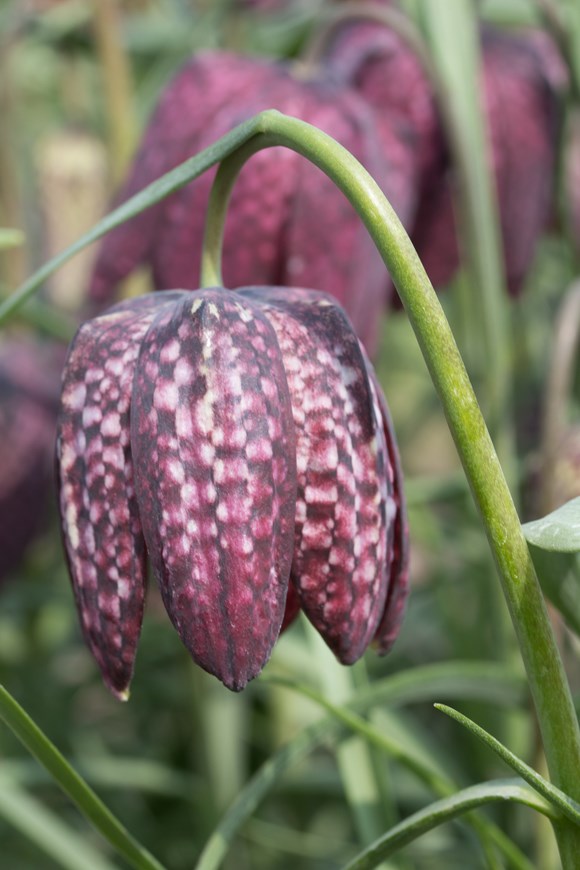Fritillaria meleagris

We will not be posting out now until the 6th January 2026
from £6.00 to £18.00
Fritillaria meleagris is known as the Snakeshead Fritillary (fritillary just meaning chequered, describing the tessellated patterning on the flower). It grows from southern England through France to Poland. They were once widespread in England and a regular feature in Elizabethan gardens but many of the damp meadows in which it once grew have been ploughed or drained, and the flowers have been lost. A few dozen wild sites remain and it is in similar conditions that it likes to grow in our gardens. It grows easily in grass or drained but damp soil in the sun or half shade, but does not like being dried out completely. The leaves are narrow, and can be lost in grass, but the flowers are beautiful, square-shouldered bells in pink, mauve and darker purples, lightly chequered. Inside they are paler, but more splashed with shining green. They should to be planted in late summer or early autumn, to allow rooting to start before the soils cool. Higher rainfall in the spring will encourage them rather than years of winter drought.
Fritillaria meleagris has been awarded the RHS Award of Garden Merit because it has proved to be reliable in appropriate conditions and a good performing plant.
Planting Instructions
Fritillaria meleagris bulbs should be planted in small unregimented drifts of 5-7 bulbs 4" (10cm) apart and about 4" (10cm) deep at variable spacing (10-15 per sq ft) in heavier soils in the open or slight shade, perhaps in rough grass. They like cool damp growing conditions in spring before a drier summer rest.
Plant Details
Flowers March / April
Height 12" (30cm)
Hardy





